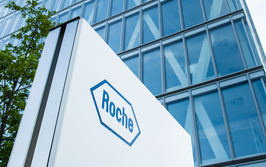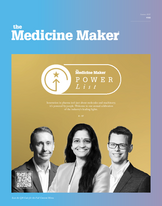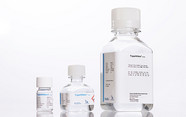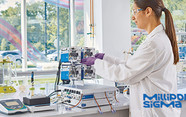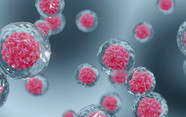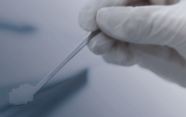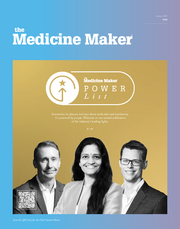Stem Cell Research and Treating Radiation Exposure
Researchers demonstrate how extracellular vesicles derived from mesenchymal stem cells can increase survival chances following exposure to lethal doses of radiation.

Kenneth C. Zirkel, CC BY-SA 3.0 <https://creativecommons.org/licenses/by-sa/3.0>, via Wikimedia Commons
In a new development for radiation medicine, researchers at Brown University have demonstrated that extracellular vesicles derived from mesenchymal stem cells (MSC-EVs) can significantly boost survival and hematopoietic recovery in mice subjected to lethal doses of radiation. Published in Stem Cells and Development, the findings point to a novel therapeutic approach that could be deployed in the aftermath of nuclear accidents, radiological terrorism, or other high-exposure scenarios where current interventions fall short.
The work, led by Sicheng Wen at Rhode Island Hospital, builds on earlier preclinical evidence that MSC-EVs promote tissue repair across a range of organs. Until now, their role in addressing the catastrophic damage caused by acute radiation exposure, particularly in bone marrow, had not been fully explored.
Acute radiation syndrome (ARS), especially its hematopoietic form (H-ARS), results from the destruction of bone marrow stem cells and often proves fatal because of subsequent infections or hemorrhage. Although granulocyte colony-stimulating factor (G-CSF) is the only FDA-approved mitigator, its limited efficacy and availability post-crisis leave a critical gap in emergency preparedness.
Following high-dose radiation, the window to act is short and logistical challenges are immense. Acellular therapies such as MSC-EVs could help expand timelines and overcome some of the hurdles that cell-based approaches face.
The study involved irradiating C57BL/6 mice with a 950 cGy total body dose – a level sufficient to ensure 100 percent mortality within 30 days. A separate group received daily intravenous infusions of human MSC-EVs for three days, starting 24 hours after exposure. At the 120-day mark, 70 percent of treated mice remained alive. All untreated mice died within a month.
Such a dramatic improvement in survival highlights the potential of MSC-EVs as a practical, off-the-shelf countermeasure. The vesicles, which include exosomes and microvesicles, are packed with bioactive cargo such as RNAs and proteins that modulate inflammation, reduce apoptosis, and promote tissue repair.
Not instant, but lasting hematologic repair
Early bloodwork told a less optimistic story: white blood cell, red blood cell, hemoglobin, and platelet counts remained severely depressed for two weeks post-irradiation – even in treated animals. But by the three-month point, peripheral blood counts in MSC-EV-treated mice had significantly rebounded, with levels of RBCs, hemoglobin, and platelets nearing baseline.
Bone marrow cells from treated mice showed stronger engraftment in competitive transplant assays, indicating a return of true regenerative function.
To dig deeper, the team analyzed gene expression in 30 markers linked to hematopoietic stem cell identity, differentiation, and inflammation. At 14 days post-exposure, many genes associated with stem cell renewal and differentiation (including SATB1, RUNX1, and CD34) were downregulated in both treated and untreated mice. But by 120 days, gene expression in the treated group had largely normalized.
Only two genes (CXCR4 and MCAM) remained significantly elevated, suggesting that MSC-EVs may help re-establish marrow microenvironments even after long-term damage.
MSC-EVs offer several advantages over conventional stem cell therapies. They are non-living, easy to store, less immunogenic, and simpler to scale. Unlike hematopoietic cell transplants, they do not require patient matching or extensive handling, and can be deployed more readily in emergency situations.
Their acellular nature also sidesteps the risks of tumorigenesis and engraftment failure – two concerns that continue to hinder stem cell-based treatments. With ongoing clinical trials exploring MSC-EVs for various diseases, the study helps add radiation mitigation to a growing list of promising applications.
Despite the positive results, questions remain. The precise mechanisms of action are not fully understood, and MSC-EV treatment did not offer significant short-term hematologic recovery. The authors propose that combining MSC-EVs with other mitigators like G-CSF could yield synergistic effects, offering faster and more sustained protection.
Following a Bachelor’s degree in English Literature and a Master’s in Creative Writing, I entered the world of publishing as a proofreader, working my way up to editor. The career so far has taken me to some amazing places, and I’m excited to see where I can go with Texere and The Medicine Maker.






